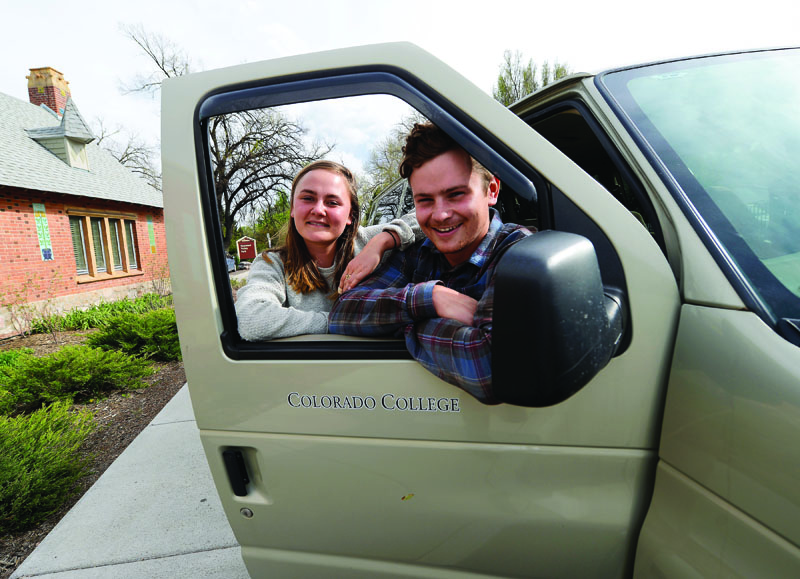Take a run-of-the-mill, 15-passenger Ford E-350 with a 6-liter diesel engine, add a student with a sense of ingenuity, toss in some waste vegetable oil, and the result is CC’s new Veggie Van.
A pet project of Tom Crowe ’15, the van is a joint effort between the Office of Sustainability and the Department of Outdoor Education (the primary user), and was funded by the Campus Sustainability Council.
The basic premise, Sustainability Director Ian Johnson said, is that “a diesel engine is designed to burn oil, not gas. Rudolph Diesel designed his engine to run on peanut oil, but after petroleum companies became involved, they devised a less refined by-product of crude oil that also worked well. The resulting diesel fuel that is used worldwide today can still be supplanted by plant oils.”
Crowe’s plans for the van include taking waste vegetable oil (WVO) from CC’s food service operations, hand-pumping it from the Worner Center loading dock, and storing it in 55-gallon drums in a trailer specially built as a filtration unit. The oil is sent through a high-speed centrifuge, filtering out any particles that remain from cooked food and removing any water or moisture, and then is saved in a clean 55-gallon drum until it is needed in the van.
“We purchased a dual-fuel kit that automates the process. This was the Rolls Royce of WVO kits, but we wanted the most automatic of kits available to make it über user-friendly for our students. We located a second fuel tank from a Jeep Cherokee in a junkyard that fit perfectly between the frame in the rear of the van for WVO,” Johnson said.
“WVO needs to be at least 150 degrees to flow and burn cleanly, so the van is started up on regular diesel and engine coolant is used to heat the tank of WVO. When the tank reaches temperature, a control module automatically switches from diesel to WVO. The switchover is seamless … . When the van is shut off and the key is removed, the control module switches back to diesel and continues to run for 90 seconds to purge WVO from the fuel lines and injectors in order to facilitate a clean and easy start-up the next time the van is started.”
It’s all automatic, Johnson added. “I can pull the key out, lock the doors, and walk away while the van continues its purge cycle.”
Performance is nearly the same as any other diesel vehicle — around 12-15 MPG on the highway — and the tank holds about 26 gallons, a good range for regional trips. The van still has its original diesel tank and can run solely on diesel from a gas station; if a group of students travels beyond the range of the WVO tank, they can fill up with regular diesel.
“Aside from the smell of French fries coming from the exhaust, nothing noticeable occurs at all,” Johnson said.
